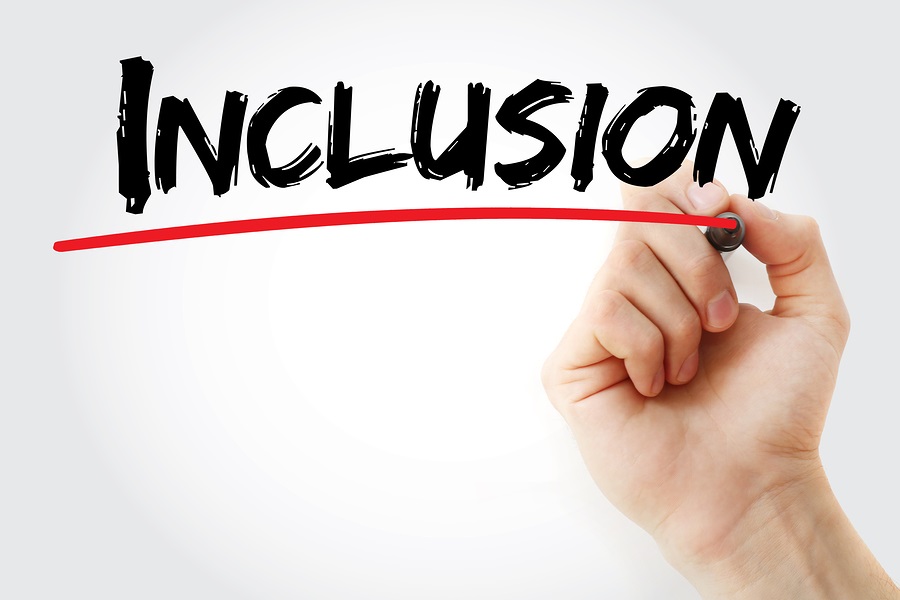
Antionette Kerr is back with us today for another post in the series we are calling “Inclusive Conversations.” It’s all about cultural competency and how communications staff can not only be more inclusive and therefore effective in their communications work products, but also lead these conversations within their own nonprofits. Stay tuned for much more in 2018! ~Kivi
Inclusive Conversations:
Make a Statement in 2018
As 2017 draws to a close —those deep cultural divisions that have been exposed aren’t exactly going away.
So what’s next? Communications is ever so important for nonprofits in a nation that reports, among other things, “76 percent believe that poor people don’t have enough influence,” and according to a summer survey conducted by Pew Research Center, almost seven in ten Americans believe that inequality is a “very big” or “moderately big” problem.
In “Nonprofits, you are the Champions for Diversity, Inclusion, and Equity,” Jennifer Chandler of National Council of Nonprofits asked an important question…
“Is your nonprofit a champion for diversity, inclusion, and equity?”
You can start by making a statement. Crafting a statement isn’t the only step nonprofits need to take but a statement of equity and inclusion is an optimal start. The statements should convey, in a genuine way, that your agency is a safe and inclusive place where any individual or group can be and feel welcomed, respected, supported, and valued to fully participate.
It’s more than another document…
Creating an Inclusion Statement isn’t about creating yet another document: It has the potential to:
- Kickstart dialogue within your agency about equity and inclusion
- Send a welcome message to people of all backgrounds
- Create a method of accountability and core values for your agency
It’s all about the process.
The process of creating the statement has been beneficial for organizations like Americans for the Arts. In fact, it was so important that it shares their 10-step process on their website. “The new Americans for the Arts Statement on Cultural Equity was created in a year-long process. While our process may or may not be right for you, we are sharing the steps we took, our timeline, and an editable, generic Word document version of the Statement with you to hopefully inform you in your work to adopt or adapt the Statement as appropriate for your organization.”
Here is what they came up with:
Definition of Cultural Equity
“Cultural equity embodies the values, policies, and practices that ensure that all people—including but not limited to those who have been historically underrepresented based on race/ethnicity, age, disability, sexual orientation, gender, gender identity, socioeconomic status, geography, citizenship status, or religion—are represented in the development of arts policy; the support of artists; the nurturing of accessible, thriving venues for expression; and the fair distribution of programmatic, financial, and informational resources.”
Americans for the Arts went on to list key acknowledgments & affirmations.
“In the United States, there are systems of power that grant privilege and access unequally such that inequity and injustice result, and that must be continuously addressed and changed.

Cultural equity is critical to the long-term viability of the arts sector.
We must all hold ourselves accountable, because acknowledging and challenging our inequities and working in partnership is how we will make change happen.
Everyone deserves equal access to a full, vibrant, creative life, which is essential to a healthy and democratic society.
The prominent presence of artists challenges inequities and encourages alternatives.”
Where should you begin?
It’s okay if you don’t have the time (or resources) to launch a ten-step process like one suggested by the Americans for the Arts. A few steps can accomplish the same purpose.
- Create an internal/external survey. People are more likely to be honest in helping to identify areas where your agency could improve in diversity and inclusion.
- Create a small task force with a cross-section of people from different departments and aspects of the agency.
- Draft something. It might seem daunting but take a look at other statements and put something together. It’s always easier for people to start dialogue when they have a starting point.
Here are a few examples to get you started but there are many more online:
“We respect, value, and celebrate the unique attributes, characteristics, and perspectives that make each person who s/he is. We also believe that bringing diverse individuals together allows us to collectively and more effectively address issues facing our communities. It is our aim, therefore, that our partners, strategies, and investments reflect these core values.” –United Way Inclusion Statement
“ACPA – College Student Educators International actively promotes and recognizes principles of fairness, equity, and social justice in relation to, and across, intersections of race, age, color, disability, faith, religion, ancestry, national origin, citizenship, sex, sexual orientation, social class, economic class, ethnicity, gender identity, gender expression, and all other identities represented among our diverse membership.”
The second paragraph explains why this type of statement is important:
“By appreciating the importance of inclusion, we acknowledge that the collective and individual talents, skills, and perspectives of members, constituent groups, and partners foster a culture of belonging, collaborative practice, innovation, and mutual respect. ACPA seeks to empower and engage professionals, scholars, and partners in actions who productively contribute to accomplishing the goals of our association.”
What is YOUR 2018 Statement?
Your Statement of Equity and Inclusion should be a unique reflection of your organization’s values. If you already have a statement take this time to make sure it sounds authentic and contains elements of your voice. Of course, you will need to get approval and buy-in before adding it to your website. This is an excellent way to start Inclusive Conversations with coworkers and your board of directors.
Consider this another step in moving beyond conversation to meaningful action!





